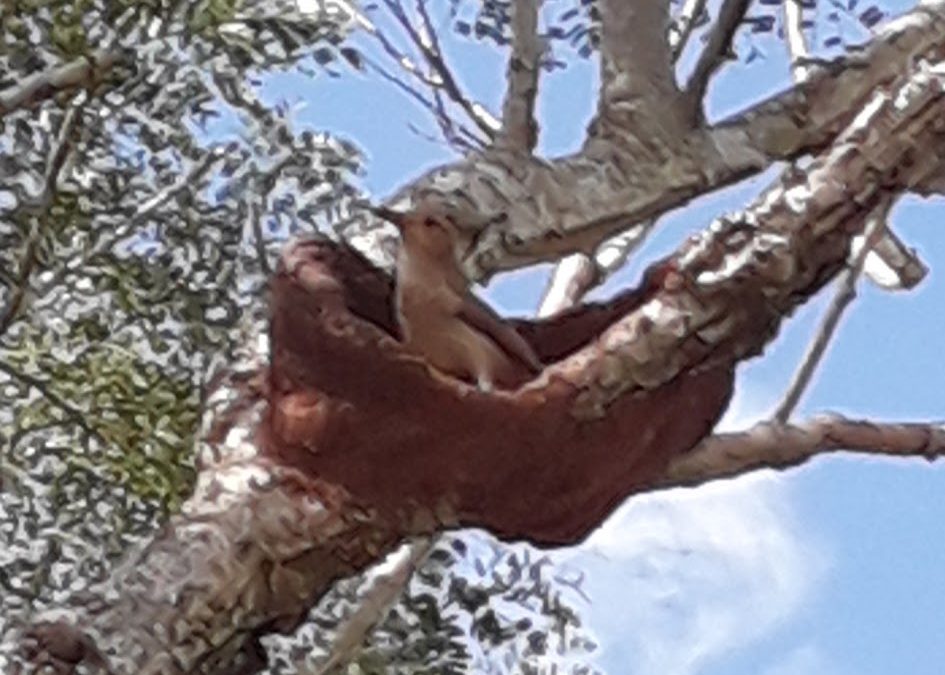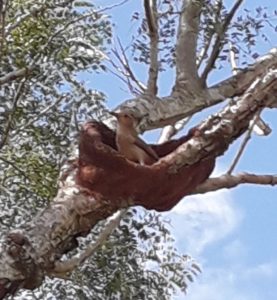Rufous Hornero, or as he is more usually know is not much to look at. Just another nondescript small brown bird. However his habits make him one of the most conspicuous in Paraguay.
Firstly the hornero is not a shy retiring woodland bird, but instead one that actively seeks man. Few gardens can be without a pair going about their business all day long.
This boldness and habit of choosing habitated places to live have earned the hornero a human name. In England the wren which lives equally close to man has aquired the name Jenny and here it is the hornero that is accepted as part of society under the name Alonso.
The hornero being a bird of South America is know by it’s Spanish name Hornero rather than the English translation Ovenbird. This also helps distinguish from the North American bird also named Ovenbird.
What really makes this small brown bird noticable is not how common it is in the garden but rather the nest it builds for itself.
This is not a collection of twigs and grasses but instead a dome of red clay. The birds will build these nests at any time of year when rains have softened the heavy clay soil into something more suitable for pottery. From observation I believe many of these nests are for practice rather than for chicks.
A pair of horneros will remain together for many years and live within the same patch of ground year round rather than migrating. Around their territory will be a number of nests in various states of repair as eventualy the rain washes these temporary structures away.
Building of a nest begins with a round disc of clay to form the base from which the walls of the nest slowly rise to form a domed structure with one narrow enterance. Inside a dividing wall seperates the nesting chamber from the rest of the nest.
The natural place for these constructions is high up in in trees where their branches fork. However a pair of horneros are just as happy to build on top of less natural features such as telegraph poles, electric pylons or even fence posts.
The shape and form of their nests are reflected in every Paraguayan home where in every garden there is a clay and brick oven mirroring the horneros nests and inside which are cooked celebratory and traditional foods.
The hornero is thus as much a part of Paraguayan tradition as anything created by man.



Recent Comments